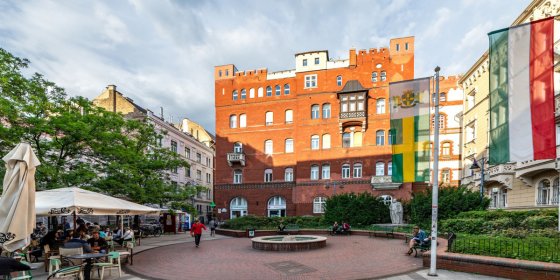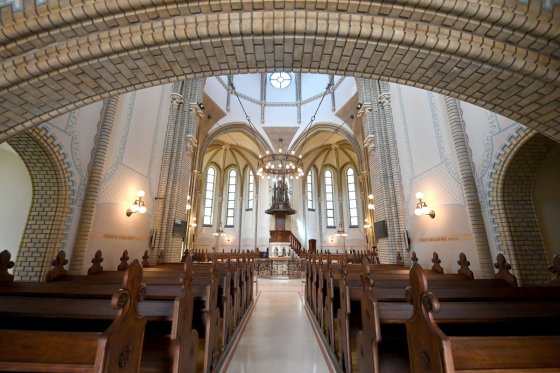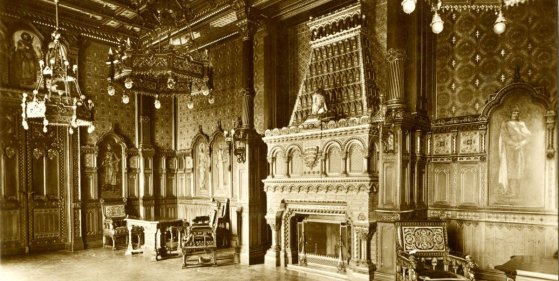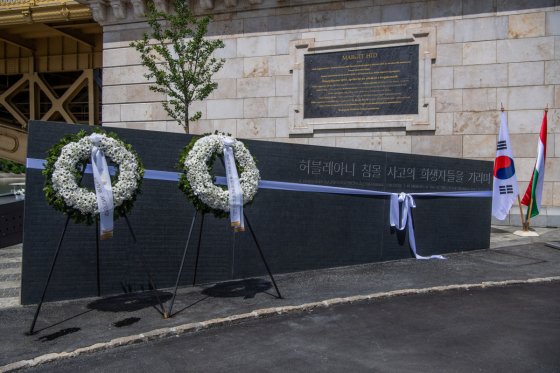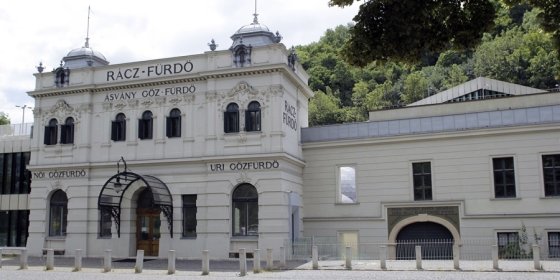 The „intertwined history” of the bridges and the city of Budapest
Which ideas and events have shaped the fate of bridges of Budapest and the cityscape? Alongside many other interesting facts, this question is also answered this newly published book by the Budapest City Archives, which introduces the history of bridges in Budapest.
The „intertwined history” of the bridges and the city of Budapest
Which ideas and events have shaped the fate of bridges of Budapest and the cityscape? Alongside many other interesting facts, this question is also answered this newly published book by the Budapest City Archives, which introduces the history of bridges in Budapest.
PestBuda
 Nyugati Railway Station closed for a month
Nyugati Railway Station closed for a month
June 8, 2021 at 6:00 PM
The renovation of the Western Railway Station, which started last year, has entered a new phase. After 95% of the passenger and track hall reconstruction has been completed, the whole building is now being closed for maintenance work on 19 June and will only reopen on 18 July. One of the busiest railway stations in the capital that handles 18 million passengers a year, was last renovated between 1978 and 1988.
Fountain on Mikszáth Square under renovation
June 8, 2021 at 3:30 PM
Maintenance of the fountain last renovated in 2014, but out of operation for the past two years will begin in the middle of June.
Neons lost – Many billboards on Rákóczi Road are reminiscent of old times
June 8, 2021 at 9:00 AM
Hundreds of neon signs used to fill Budapest at night with colourful light. However, the lamps constantly needing to be maintained and wasting energy were replaced by more modern advertisements decades ago. However, many of the advertising signs or their rusty remnants can still be seen in their original place to this day, damaging the cityscape.
Contract signed – Renovation of Blaha Lujza Square to begin this summer
June 7, 2021 at 8:15 PM
Although in a simpler form than before, the renovation of one of the most important traffic and transport junctions in Budapest, which has been neglected for decades, will begin in the summer. As part of the project, the surface of the square will be rebuilt, and connecting roads and pavements will be renewed.
Renovation of Szilágyi Dezső Square Reformed Church completed
June 6, 2021 at 6:00 PM
After the external restoration carried out a few years ago, the interior renovation of the Reformed Church on Szilágyi Dezső Square has been completed. Consecrated 125 years ago, the church, designed by Samu Petz, has been given restored benches, glass windows and new floor tiles.
Changes to Batthyány Square
June 5, 2021 at 5:00 PM
The renovation of Batthyány Square aims to increase pedestrian-friendly and green areas and to better serve the needs of pedestrians, the Budapest Transport Center has announced. Due to the works, traffic rules will change in the area, and the stops of buses departing and terminating here will be moved.
"The most lavish fireplace ever made in Hungary"
June 5, 2021 at 10:30 AM
Hardly anyone would doubt that the country’s most famous fireplace stood in the St. Stephen’s Hall of the Royal Palace. Vilmos Zsolnay lived to see the making of the sophisticatedly designed and executed masterpiece made of Zsolnay majolica, but he could no longer supervise its installation: he died not long before. Lucky posterity, however, may soon admire the work destroyed after World War II, as the former masterpieces were rebuilt under the National Hauszmann Program in the reborn St. Stephen's Hall. In this article, Pestbuda looks at the behind-the-scenes of the redesigning of the fireplace.
Outdoor exhibition opens at Memorial of National Unity
June 4, 2021 at 6:00 PM
The outdoor exhibition, opened on the Day of National Unity, will be visible over the weekend. The exhibition presents selected photos from the competition announced in the spirit of the Year of National Re-Start, allowing visitors to travel to near and far away places to learn how Hungarians see the world in 2021.
Restored Forum Romanum column erected in the Museum Garden
June 4, 2021 at 4:00 PM
After its restoration and partial reconstruction, the column donated to Hungary by the Italian capital in 1929 was re-erected in the garden of the Hungarian National Museum. The column originates from a former temple of the Forum Romanum in Rome.
Playground and outdoor gym built on Nagyrét in Hűvösvölgy
June 3, 2021 at 4:00 PM
Pilisi Parkerdő Zrt. and the Magyar Természetjáró Szövetség ('Hungarian Hiking Association') have set up a thematic playground and an outdoor gym on Nagyrét in Hűvösvölgy, one of Budapest's most popular nature destinations.
Only a belfry reminds Budapest of the Serbian Orthodox Church that once graced the Tabán
June 3, 2021 at 2:00 PM
Today, a belfry on Döbrentei Square is the only memory of the former Serbian Orthodox Church, which was consecrated on 3 June 1751, 270 years ago. The church dedicated to Demetrius of Thessaloniki was demolished in 1949 for political reasons.
The first gas lamp in Pest was lit 205 years ago
June 3, 2021 at 9:00 AM
The aldermen of Pest were given plenty to think about when providing night lighting on the city streets in the 18th century, so in 1715, they forbade staying on the street without a candle or lantern after sunset. Lantern-bearers appeared, carrying candles and oil lamps in front of pedestrians. Oil lamps began to be put out in public spaces at the end of the century, but they only gave little light. The solution was the gas lamp, the first of which was set up in Pest by a scientist, experimenting physician, Lajos Tehel, on 5 June 1816. The lamp was lit up on the facade of the university building on today’s Egyetem Square. Now it is part of the National Museum’s collection.
Jungle playground in Gazdagrét renovated
June 2, 2021 at 7:00 PM
The renovation of the jungle playground in Gazdagrét will be completed by the summer. The old, worn toys will be replaced with new ones, with plants added to the space.
BKK hoping to plan bicycle paths
June 2, 2021 at 4:30 PM
The Budapest Transport Center has issued a call for tenders for the planning of four cycling routes in Budapest on the European Union public procurement notice website. The roads will be part of the European cycling network, EuroVelo.
Monument erected at Margit Bridge to the victims of the Hableány sinking
June 1, 2021 at 8:00 PM
At the Pest end of Margit Bridge, a gray granite block more than 7 meters long and one and a half to two meters high stands as a memorial to the tragedy of the Hableány riverboat that was sunk two years ago. The names of the 28 victims have been engraved on the monument and are illuminated with spotlights.
Kútvölgyi Hospital to be renovated
June 1, 2021 at 4:00 PM
The Kútvölgyi Wing of the Új Szent János Hospital, commonly known as the Kútvölgyi Hospital, will be strengthened, and the previously discontinued facade renovation will be continued. The doors and windows will be replaced during the works, and new thermal insulation and air conditioners will be installed. Renovation of the block is scheduled to be completed later this year.
Unique ceiling and parquet of Saint Stephen's Hall recreated
June 1, 2021 at 1:00 PM
The construction of Saint Stephen's Hall in the southern connecting wing of the Royal Palace of Buda Castle has entered a new phase. According to the announcement from Várkapitányság, the spectacular ceiling and parquet have been installed, and most of the custom furniture has also been completed. The next task will be to recreate the lavish wall covering
Timing trouble – The difficulties of introducing a 24-hour clock system
June 1, 2021 at 9:00 AM
Today, it is natural for a train to depart Nyugati Railway Station not at 1 pm, but at 13:00, but on 1 June 1921, this was a surprising novelty. The 24-hour clock system, introduced a hundred years ago, was unusual for the people of Budapest even years later. However, even clock faces were redesigned because of the change.
Rác Bath sold – Budapest bath operator wins auction
May 31, 2021 at 7:00 PM
The story of Rác Bath has reached another milestone, after standing empty for ten years since its renovation. During the liquidation procedure, Budapest Gyógyfürdői és Hévizei Zrt. (BGYH) was the only bidder to buy the spa and the hotel built at the starting price of about five billion HUF. However, the opening will have to wait, as the building needs further renovations.
Vehicle entry to Buda Castle first restricted 35 years ago
May 31, 2021 at 3:00 PM
Today car access to the castle is limited, and only midi-buses run within its ancient walls. Restrictions on access were introduced 35 years ago because traffic endangered historic buildings and the caves beneath the streets of the castle.
Mushroom on Örs Vezér Square to close
May 31, 2021 at 9:00 AM
Let's meet on Örs, at the Mushroom! The common sentence marks a meeting place almost as well known as the clock on the old Moszkva Square. The Mushroom once housed a traffic control centre but on 1 June 2021, even the ticket offices are closing. The fate of the building remains unknown.
The first Children's Day in Budapest was held 115 years ago - Fundraising has continued for impoverished Children till today
May 30, 2021 at 9:00 AM
One hundred and fifteen years ago, in 1906, Children's Day was first held in Budapest and we would be very surprised if we could go back in time to the streets of the capital with the help of a time machine. The event was actually a relief operation for the benefit of orphaned and ill-fated children, but it was all accompanied by a public festival that, according to contemporary accounts and images, moved every stratum of society. The most distinguished women sat next to the fundraising boxes, musicians and stuntmen marched in the streets, and a multitude of people had fun and donated generously.
A square took his name before his death – Albert Apponyi was born 175 years ago
May 29, 2021 at 3:00 PM
One of the important squares of Budapest was named after him during his lifetime. One hundred years ago, he was a hero celebrated by the whole country, on whose birthday the people of the capital filled the streets. The nation's lawyer, Albert Apponyi, born 175 years ago. He earned his title with his famous speech in the negotiations leading up to the Treaty of Trianon. Although he was considered one of Hungary's greatest statesman in his life and after his death, communism tried to make people forget him after the war. Not much is reminiscent of the once-respected politician in the Hungarian capital today.
Cannonballs found in the Danube near Chain Bridge
May 29, 2021 at 12:00 AM
Archaeologists have found two medieval carved stone cannonballs in the Danube riverbed. One is so huge that they were unable to bring it to the surface. The projectiles may be from the late Middle Ages. Many other valuable archaeological finds have also been unearthed.
Campaign launched against rats 90 years ago in Budapest
May 28, 2021 at 10:00 AM
A war against rats was launched in the capital in 1931, but a mistake slipped into the thorough and long-planned campaign. Fewer rats died than planned, and there were many "civilian" casualties, like dogs, cats, and birds.
Memorial plaque unveiled on house of Hungarian poet János Pilinszky
May 27, 2021 at 7:30 PM
The Imre Kertész Institute has commemorated János Pilinszky, who died forty years ago and was born a hundred years ago. As the opening of the half-year event series, a memorial plaque was unveiled today at the poet's former home on Izabella Street. Pilinszky's life will be presented at an outdoor exhibition on Benczúr Street.
Renovation of the Pest embankment to on 7 June that of Blaha Lujza Square in early July
May 27, 2021 at 2:00 PM
Two major reconstructions in Budapest will begin this summer. In a week and a half, the renovation of a section of the lower embankment of Pest between Margit Bridge and Parliament will begin. The renovation of Blaha Lujza Square is scheduled to start in July, but according to simpler designs than previously planned.
Metro escalator tested in Hűvösvölgy terminus of the Children's Railway
May 27, 2021 at 10:00 AM
An escalator transported passengers for a few years from May 1956 at the Hűvösvölgy terminus of the Children's Railway. It was built as a kind of test. Its primary purpose was not to ensure the comfort of the passengers on the Children's Railway, then called the Pioneer Railway, but to educate the operators and users. At the time, the Budapest metro was already under construction, and the escalator needed testing too.
Vendors once sold their goods on Csarnok Square in Ferencváros, where shoppers and tourists now relax
May 26, 2021 at 9:00 AM
Although Csarnok (Market Hall) Square in Ferencváros did not exist before 1896, after the opening of the Central Market Hall, a busy life began on the 9th District's smallest, but all the more special square, where hundreds of graves were unearthed during a 2016 hotel construction, highlighting a small detail of the area's vibrant past.
The first statue of Saint Stephen in Budapest was completed in 1906
May 25, 2021 at 10:00 AM
The statue of Saint Stephen has been standing in Buda Castle next to the Fisherman's Bastion for 115 years. Although the founding king of Hungary has always been highly respected in the country, the great work of Alajos Strobl was completed slowly. The first statue of King Stephen in Budapest was inaugurated in 1906 next to Matthias Church almost 40 years after it was first planned.
More articles
 The „intertwined history” of the bridges and the city of Budapest
Which ideas and events have shaped the fate of bridges of Budapest and the cityscape? Alongside many other interesting facts, this question is also answered this newly published book by the Budapest City Archives, which introduces the history of bridges in Budapest.
The „intertwined history” of the bridges and the city of Budapest
Which ideas and events have shaped the fate of bridges of Budapest and the cityscape? Alongside many other interesting facts, this question is also answered this newly published book by the Budapest City Archives, which introduces the history of bridges in Budapest.
 The Bridge Report, which brought a turning point in the history of Budapest
A travel report that changed the history of Pest and Buda, as well as Hungary. The little book contributed to the change of half a thousand years of legal customs and the implementation of an investment of unprecedented size and technical quality. This book was The Bridge Report [Hídjelentés in Hungarian].
The Bridge Report, which brought a turning point in the history of Budapest
A travel report that changed the history of Pest and Buda, as well as Hungary. The little book contributed to the change of half a thousand years of legal customs and the implementation of an investment of unprecedented size and technical quality. This book was The Bridge Report [Hídjelentés in Hungarian].
 Drama on the university wall - The heroic monument was planned 95 years ago
In the constant hustle and bustle of the Egyetem Square in Pest, the students may not even notice the monument that decorates the short section of wall between the church and the central building of ELTE. However, it commemorates their predecessors, the heroes who fought for their country in World War I, and those who heroically helped them. The first design of the dramatically collapsing soldier was born in 1928, ninety-five years ago.
Drama on the university wall - The heroic monument was planned 95 years ago
In the constant hustle and bustle of the Egyetem Square in Pest, the students may not even notice the monument that decorates the short section of wall between the church and the central building of ELTE. However, it commemorates their predecessors, the heroes who fought for their country in World War I, and those who heroically helped them. The first design of the dramatically collapsing soldier was born in 1928, ninety-five years ago.

